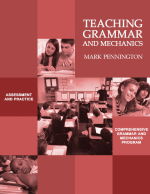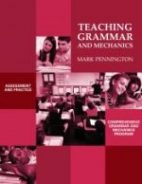Turning Dependent into Independent Readers
The Common Core State Standards for English-language Arts makes a compelling case for not doing business as usual in our ELA classrooms. That business consists of the traditional “sage on the stage” methodology of reading an entire novel or play out loud (or along with the audio book) and parsing paragraphs one at a time. Our new business? Scaffolding just enough reading strategies and content as we act as “guides on the side” to facilitate independent reading. In other words, the days of spoon-feeding have got to go.
I can hear the excuses. But they won’t read it on their own. They won’t understand it on their own. My students have varied reading levels. We have core novels and plays to teach—that’s our job. Yes, those are valid concerns; however, there are proven means to ameliorate those concerns.
Following is the rationale for creating independent readers, then an analysis of the teacher-dependent status quo, and finally a few practical ideas to minimize scaffolding and maximize comprehension of challenging text.
Reading Independently: The Rationale
Excerpts from the Common Core State Standards for English-language arts & literacy in history/social studies, science, and technical subjects Appendix A | 2…
Being able to read complex text independently and proficiently is essential for high achievement in college and the workplace and important in numerous life tasks. Moreover, current trends suggest that if students cannot read challenging texts with understanding—if they have not developed the skill, concentration, and stamina to read such texts—they will read less in general. In particular, if students cannot read complex expository text to gain information, they will likely turn to text-free or text-light sources, such as video, podcasts, and tweets. These sources, while not without value, cannot capture the nuance, subtlety, depth, or breadth of ideas developed through complex text. As Adams (2009) puts it, “There may one day be modes and methods of information delivery that are as efficient and powerful as text, but for now there is no contest. To grow, our students must read lots, and more specifically they must read lots of ‘complex’ texts—texts that offer them new language, new knowledge, and new modes of thought” (p. 182).
A turning away from complex texts is likely to lead to a general impoverishment of knowledge, which, because knowledge is intimately linked with reading comprehension ability, will accelerate the decline in the ability to comprehend complex texts and the decline in the richness of text itself. This bodes ill for the ability of Americans to meet the demands placed upon them by citizenship in a democratic republic and the challenges of a highly competitive global marketplace of goods, services, and ideas.
The Teacher-Dependent Status Quo
College Preparation
There exists “a serious gap between many high school seniors’ reading ability and the reading requirements they will face after graduation. Furthermore, students in college are expected to read complex texts with substantially greater independence (i.e., much less scaffolding) than are students in typical K–12 programs. College students are held more accountable for what they read on their own than are most students in high school (Erickson & Strommer, 1991; Pritchard, Wilson, & Yamnitz, 2007).
College instructors assign readings, not necessarily explicated in class, for which students might be held accountable through exams, papers, presentations, or class discussions. Students in high school, by contrast, are rarely held accountable for what they are able to read independently (Heller & Greenleaf, 2007). This discrepancy in task demand, coupled with what we see below is a vast gap in text complexity, may help explain why only about half of the students taking the ACT Test in the 2004–2005 academic year could meet the benchmark score in reading (which also was the case in 2008–2009, the most recent year for which data are available) and why so few students in general are prepared for postsecondary reading (ACT, Inc., 2006, 2009).”
The Achievement Gap
It should be noted also that the problems with reading achievement are not “equal opportunity” in their effects: students arriving at school from less-educated families are disproportionately represented in many of these statistics (Bettinger & Long, 2009). The consequences of insufficiently high text demands and a lack of accountability for independent reading of complex texts in K–12 schooling are severe for everyone, but they are disproportionately so for those who are already most isolated from text before arriving at the schoolhouse door.
A Few Practical Ideas
It is important to recognize that scaffolding often is entirely appropriate. The expectation that scaffolding will occur with particularly challenging texts is built into the Standards’ grade-by-grade text complexity expectations, for example. The general movement, however, should be toward decreasing scaffolding and increasing independence both within and across the text complexity bands defined in the Standards.
1. Teach students to select independent reading books appropriate to their instructional reading levels.
https://blog.penningtonpublishing.com/reading/how-to-determine-reading-levels/
2. Hold students accountable for independent reading.
https://blog.penningtonpublishing.com/reading/how-to-get-students-to-read-at-home/
https://blog.penningtonpublishing.com/reading/how-to-use-graded-literary-discussions/
3. Avoid read-arounds and reading large portions of text in class.
https://blog.penningtonpublishing.com/reading/to-read-or-not-to-read-that-is-the-question/
https://blog.penningtonpublishing.com/reading/why-round-robin-and-popcorn-reading-are-evil/
4. Differentiate instruction according to diagnostic reading data.
https://blog.penningtonpublishing.com/reading/the-dos-and-donts-of-differentiated-instruction/
5. Don’t teach to the LCD (Lowest Common Denominator).
https://blog.penningtonpublishing.com/reading/dont-teach-to-the-lcd/
6. Teach self-monitoring reading comprehension skills.
https://blog.penningtonpublishing.com/reading/how-to-teach-reading-comprehension/
https://blog.penningtonpublishing.com/reading/how-to-increase-reading-comprehension-using-the-scrip-comprehension-strategies/
7. Strike the appropriate balance between teaching students and the ELA standards.
https://blog.penningtonpublishing.com/reading/how-to-teach-the-english-language-arts-standards/
https://blog.penningtonpublishing.com/reading/should-we-teach-standards-or-children/
8. Teach fluency.
https://blog.penningtonpublishing.com/reading/how-and-why-to-teach-fluency/
https://blog.penningtonpublishing.com/reading/how-to-differentiate-reading-fluency-practice/
9. Teach vocabulary and structural analysis.
https://blog.penningtonpublishing.com/reading/the-problem-with-most-vocabulary-instruction-part-1/
https://blog.penningtonpublishing.com/reading/how-we-learn-vocabulary-from-reading-part-ii/
10. Share the independent reading and reading strategies load.
https://blog.penningtonpublishing.com/reading/learning-to-read-and-reading-to-learn/
11. Maximize teaching the text, not the personal application of the text.
https://blog.penningtonpublishing.com/reading/into-through-but-not-beyond/
12. Teach the reading-writing connection.
https://blog.penningtonpublishing.com/reading/twelve-tips-to-teach-the-reading-writing-connection/
The Science of Reading Intervention Program: Word Recognition includes explicit, scripted instruction and practice with the 5 Daily Google Slide Activities every reading intervention student needs: 1. Phonemic Awareness and Morphology 2. Blending, Segmenting, and Spelling 3. Sounds and Spellings (including handwriting) 4. Heart Words Practice 5. Sam and Friends Phonics Books (decodables). Plus, digital and printable sound wall cards and speech articulation songs. Print versions are available for all activities. First Half of the Year Program (55 minutes-per-day, 18 weeks)
The Science of Reading Intervention Program: Language Comprehension resources are designed for students who have completed the word recognition program or have demonstrated basic mastery of the alphabetic code and can read with some degree of fluency. The program features the 5 Weekly Language Comprehension Activities: 1. Background Knowledge Mentor Texts 2. Academic Language, Greek and Latin Morphology, Figures of Speech, Connotations, Multiple Meaning Words 3. Syntax in Reading 4. Reading Comprehension Strategies 5. Literacy Knowledge (Narrative and Expository). Second Half of the Year Program (30 minutes-per-day, 18 weeks)
The Science of Reading Intervention Program: Assessment-based Instruction provides diagnostically-based “second chance” instructional resources. The program includes 13 comprehensive assessments and matching instructional resources to fill in the yet-to-be-mastered gaps in phonemic awareness, alphabetic awareness, phonics, fluency (with YouTube modeled readings), Heart Words and Phonics Games, spelling patterns, grammar, usage, and mechanics, syllabication and morphology, executive function shills. Second Half of the Year Program (25 minutes-per-day, 18 weeks)
The Science of Reading Intervention Program BUNDLE includes all 3 program components for the comprehensive, state-of-the-art (and science) grades 4-adult full-year program. Scripted, easy-to-teach, no prep, no need for time-consuming (albeit valuable) LETRS training or O-G certification… Learn as you teach and get results NOW for your students. Print to speech with plenty of speech to print instructional components.
SCIENCE OF READING INTERVENTION PROGRAM RESOURCES HERE for detailed product description and sample lessons.
*****

The Science of Reading Intervention Program
The Science of Reading Intervention Program: Word Recognition includes explicit, scripted, sounds to print instruction and practice with the 5 Daily Google Slide Activities every grades 4-adult reading intervention student needs: 1. Phonemic Awareness and Morphology 2. Blending, Segmenting, and Spelling 3. Sounds and Spellings (including handwriting) 4. Heart Words Practice 5. Sam and Friends Phonics Books (decodables). Plus, digital and printable sound wall cards, speech articulation songs, sounds to print games, and morphology walls. Print versions are available for all activities. First Half of the Year Program (55 minutes-per-day, 18 weeks)
The Science of Reading Intervention Program: Language Comprehension resources are designed for students who have completed the word recognition program or have demonstrated basic mastery of the alphabetic code and can read with some degree of fluency. The program features the 5 Weekly Language Comprehension Activities: 1. Background Knowledge Mentor Texts 2. Academic Language, Greek and Latin Morphology, Figures of Speech, Connotations, Multiple Meaning Words 3. Syntax in Reading 4. Reading Comprehension Strategies 5. Literacy Knowledge (Narrative and Expository). Second Half of the Year Program (30 minutes-per-day, 18 weeks)
The Science of Reading Intervention Program: Assessment-based Instruction provides diagnostically-based “second chance” instructional resources. The program includes 13 comprehensive assessments and matching instructional resources to fill in the yet-to-be-mastered gaps in phonemic awareness, alphabetic awareness, phonics, fluency (with YouTube modeled readings), Heart Words and Phonics Games, spelling patterns, grammar, usage, and mechanics, syllabication and morphology, executive function shills. Second Half of the Year Program (25 minutes-per-day, 18 weeks)
The Science of Reading Intervention Program BUNDLE includes all 3 program components for the comprehensive, state-of-the-art (and science) grades 4-adult full-year program. Scripted, easy-to-teach, no prep, no need for time-consuming (albeit valuable) LETRS training or O-G certification… Learn as you teach and get results NOW for your students. Print to speech with plenty of speech to print instructional components.
Click the SCIENCE OF READING INTERVENTION PROGRAM RESOURCES for detailed program description, sample lessons, and video overviews. Click the links to get these ready-to-use resources, developed by a teacher (Mark Pennington, MA reading specialist) for teachers and their students.
Get the SCRIP Comprehension Cues FREE Resource:
![]()
Get the Diagnostic ELA and Reading Assessments FREE Resource:![]()
*****




